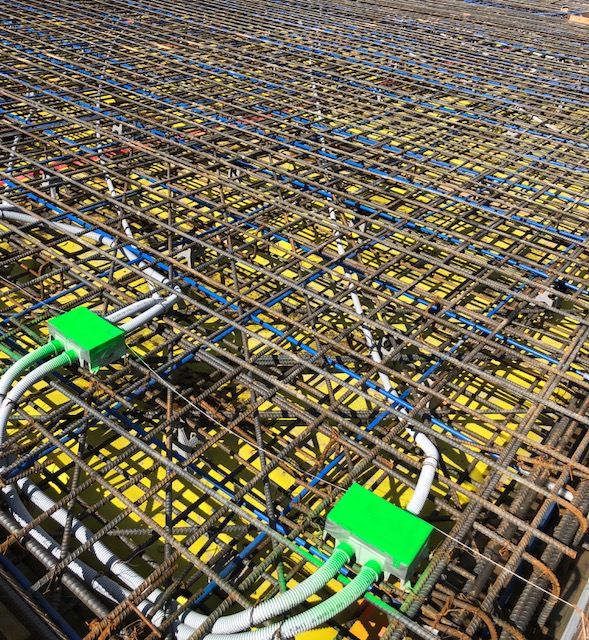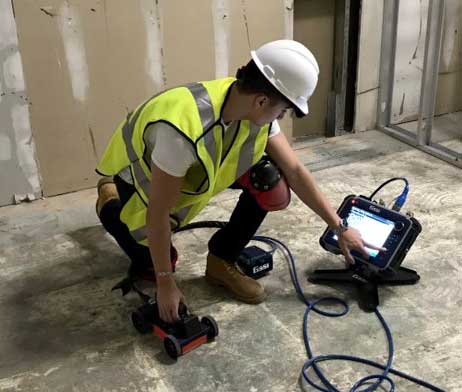Introduce the Transformative Power of Concrete Scanning in Making Best Use Of Effectiveness and Safety
Concrete scanning has actually become a critical tool in the building and construction market, supplying unparalleled advantages in enhancing task efficiency and making sure safety and security requirements. By making use of sophisticated modern technology, concrete scanning permits specialists to see beyond the surface area, revealing covert complexities that might impact the structural honesty of a structure. The transformative power of concrete scanning depends on its capacity to offer real-time information and detailed insights, revolutionizing exactly how jobs are intended and carried out. As we delve into the complexities of this ingenious strategy, a globe of opportunities opens up, showcasing a new period of building techniques that focus on accuracy and safety and security.
Importance of Concrete Scanning
Guaranteeing the structural honesty and safety and security of building tasks starts with the vital step of carrying out extensive concrete scanning. Concrete scanning is a non-destructive approach utilized to spot and map subsurface elements within concrete frameworks. This procedure is necessary in recognizing potential threats, such as rebar, post-tension wires, and avenues, that may be hidden within the concrete. By using advanced technologies like ground-penetrating radar (GPR) and electromagnetic induction, construction groups can accurately situate these aspects without causing any type of damages to the framework.
In addition, concrete scanning aids in maximizing task timelines and spending plan by preventing unexpected costs and delays that might arise due to unpredicted obstructions within the concrete. Ultimately, investing in thorough concrete scanning is a proactive method that improves both effectiveness and security in building projects.
How Concrete Scanning Works
Concrete scanning operates as a critical tool in building jobs by using sophisticated technologies to find and map subsurface components without creating structural damages. Ground Permeating Radar (GPR) and Electromagnetic Induction (EMI) are two key techniques used in concrete scanning.
Throughout the scanning procedure, the data collected is analyzed in real-time, permitting immediate identification of possible risks or barriers underneath the surface area. This information help in decision-making, guaranteeing that construction tasks proceed safely and successfully. Additionally, 3D imaging software program can be used to develop in-depth maps of the subsurface components, further improving task planning and implementation. By using these advanced innovations, concrete scanning considerably lowers the risk of costly damages and injuries on building sites.
Advantages of Concrete Scanning
One of the main benefits of concrete scanning is the capacity to detect and situate embedded things such as rebar, post-tension cords, and conduits precisely. Concrete scanning assists in preparation and creating much more effectively, as it gives accurate information regarding the area and depth of architectural components.

Situation Research Studies: Concrete Scanning Success

In one more situation, a construction business made use of 3D concrete scanning to evaluate the condition old concrete structures in a historic structure. The comprehensive scans supplied valuable insights right into the extent of wear and tear and aided focus on maintenance efforts effectively. By proactively attending to locations of issue determined via scanning, the company had the ability to extend the lifespan of the framework and make sure owner safety.
These situation research studies emphasize the transformative power of concrete scanning in boosting efficiency, accuracy, and safety in building jobs.
Applying Concrete Scanning in Projects
Applying innovative scanning technologies throughout construction projects has actually come to be increasingly necessary for boosting precision and safety. By incorporating concrete scanning right into task planning and implementation, construction teams can identify potential hazards, such as rebar or post-tension cables, concealed within concrete frameworks. This aggressive technique lessens the danger of accidents, delays, and pricey rework, inevitably leading to much more efficient task timelines and spending plans.
To apply concrete scanning properly, task supervisors sites ought to work together carefully with seasoned scanning experts to establish one of the most ideal scanning strategies for the particular job needs. Involving scanning specialists from the early stages of a job allows the team to produce comprehensive scanning address strategies that deal with key locations of concern and make certain thorough information collection.
Furthermore, incorporating concrete scanning right into routine task process can improve decision-making procedures, as real-time scan information supplies immediate understandings right into the condition of concrete frameworks - Concrete Scanning. This data-driven technique helps with educated problem-solving and allows groups to make changes quickly, fostering a culture of efficiency and security throughout the task lifecycle

Verdict
To conclude, concrete scanning plays a crucial function in boosting efficiency and security in building and construction projects. By using innovative technology to find and map out underlying structures within concrete, this procedure helps to avoid costly mistakes, make sure structural honesty, and minimize dangers on site. With the capacity to uncover hidden components and provide precise information, concrete scanning confirms to be a valuable device for optimizing task end results and making best use of total success.
Concrete scanning is a non-destructive approach made use of to detect and map subsurface elements within concrete structures. Furthermore, concrete scanning assists in enhancing job timelines and budget plan by avoiding unexpected costs and hold-ups that may develop due to unexpected obstructions within the concrete. One noteworthy case study involves a large improvement task where concrete scanning played an essential role in ensuring task success.In one more situation, a building company made use of 3D concrete scanning to analyze the problem of aging concrete frameworks in a historical building. By incorporating concrete scanning right into job planning and implementation, building and construction teams can determine potential hazards, such as rebar or post-tension cables, concealed within concrete frameworks.
Comments on “Effective Concrete Scanning Methods for Construction Tasks”